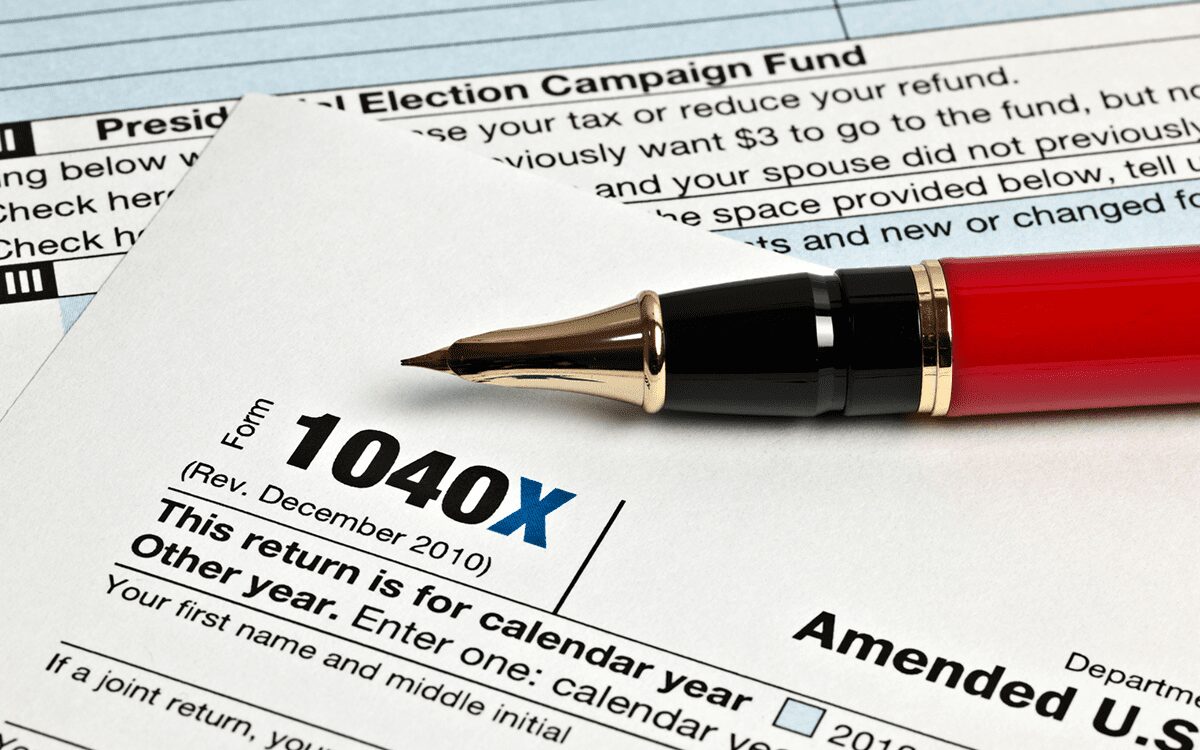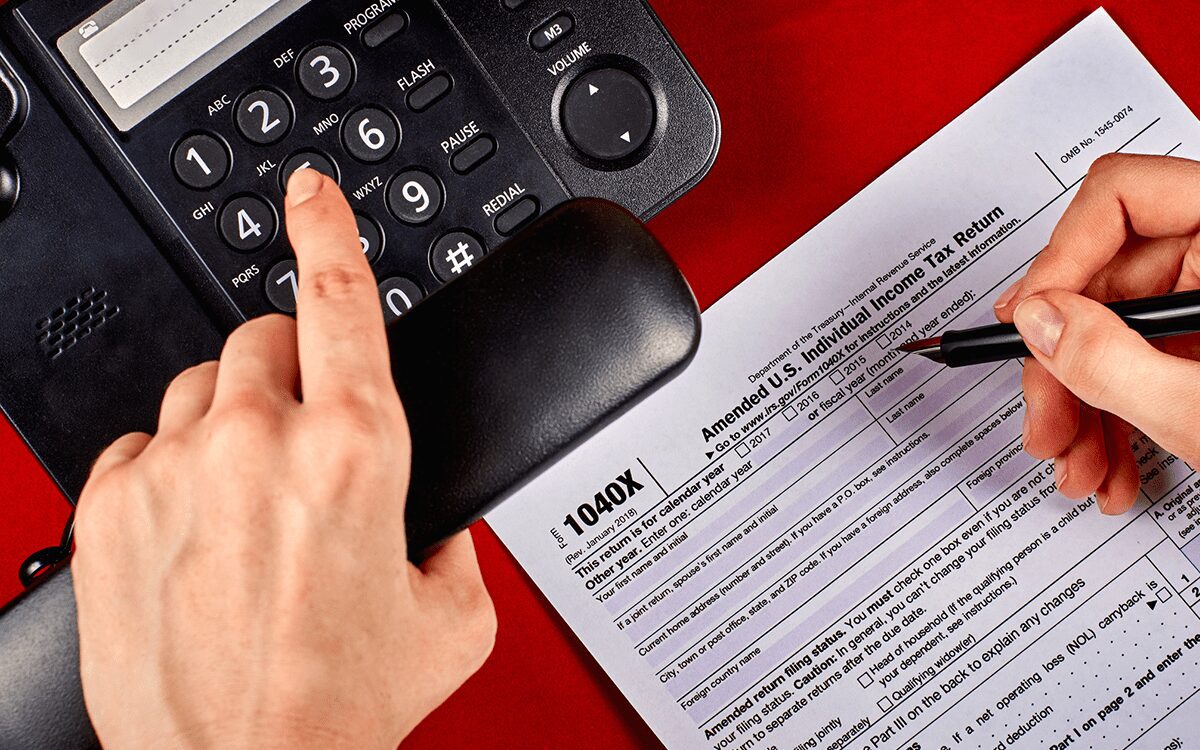Did you know you can file an amended return for a federal tax return? If you’ve recently realized some information on your most recent tax return is inaccurate or incomplete, you may need to submit an amended return. An amended tax return allows the taxpayer to make corrections and/or additions to a previously filed tax return. Understanding what an amended tax return is and when you should file one can help ensure your taxes are accurate and compliant with your annual tax liability.

When Should You File an Amended Tax Return
When Should You File an Amended Tax Return?
The Internal Revenue Service (IRS) allows taxpayers to amend returns for any number of reasons, including:
- Correcting mistakes in the information provided.
- Changing deduction or credit amounts.
- Claim additional deductions or credits.
For example, if you have recently become eligible for the Earned Income Credit (EIC) and did not claim it on your original tax return, you will need to file an amended one to receive the credit. Generally speaking, it’s best practice to file an amended return as soon as possible to prevent possible fines and penalties due to filing late.
Keep in mind there are time limits—generally three years—for amending returns to receive refunds due from prior years’ taxes. Certain exceptions to this timeframe can apply depending on circumstances, such as military service abroad or identity theft/fraud cases which would extend this time period further under special rules set by Congress. Additionally, if there are any changes in eligibility for financial aid due to changes in taxable income from amending returns, then it’s essential for students/parents who rely on student loans/grants/scholarships, etc…to notify their schools accordingly, so their aid packages don’t get affected negatively down the road.

What Does an Amended Tax Return Include?
What Does an Amended Tax Return Include?
For an amended return, you’ll need several pieces of information:
- The year of the original return was amended.
- The reason for the amendment.
- Copies of new documents that have not been previously filed with the Internal Revenue Service (IRS).
- A completed IRS Form 1040 X
- Any other applicable forms or schedules.
Amending a tax return includes all of the same information as the initial filing (such as income and deductions). Still, you may also need to submit additional documentation, such as proof of payment or any other paperwork related to the change made on your return. Finally, make sure all changes and corrections are accurately reflected on the form 1040X before submitting it along with your amended return. Filling the form out completely and accurately—including providing explanations for all changes—is critical for your amendments to be accepted by the IRS.

What are the Steps to File an Amended Return?
What are the Steps to File an Amended Return?
Here are some steps that will help guide you through the process of filing an amended return.
Step One: Gather Your Information
The first step to amending your tax return is gathering all the necessary information to file it correctly. This includes forms such as W-2s, 1099’s, and any other form required by your state or local government. It’s important to ensure you have all relevant documents when it comes time to make corrections or add information. This will help ensure no discrepancies in the data used for filing an amended return.
Step Two: Form 1040 X
Once you gather all the documents required for filing, the next step is to fill out Form 1040 X. As stated above, this separate form initiates an amended tax return and must be filled out with accurate and up-to-date information. It requires you to list current and previous financial information, including wages earned, deductions claimed, and other miscellaneous income sources like investments or alimony payments. Additionally, ensure you check off the box indicating this is an amended return being filed, as failure to do so could delay the processing time of your claim.
Step Three: Submit Your Return
Once Form 1040X has been filled out with the appropriate information, submit it along with any additional documentation required by your state or federal government (if applicable). In the past, amended returns had to be mailed. However, the IRS recently began allowing taxpayers to file an amended returns electronically, starting with the tax year 2019 and later. Generally speaking, after filing an amended retur, it should take about three weeks to process by the IRS.
If you’ve filed an amended return, you’ll also need to keep an eye out for any mail from the IRS in case additional documents or more clarity are needed on something listed on your return. If everything goes smoothly, though, congratulations! You’ll have successfully filed an amended tax return.

How Does Amending Affect My Tax Refund_
How Does Amending Affect My Tax Refund?
Amending a tax return will not necessarily affect your refund amount. There is always a possibility it could result in a lower refund than initially expected due to changes in calculations or errors in reporting income sources. Additionally, if you owe additional money due to mistakes made on your original filing (or if you receive less money than initially anticipated), these discrepancies may be subject to interest and/or penalties imposed by the IRS.
Conclusion
Taxpayers need to understand what an amended tax return is and when they should file one if they want their taxes to be accurate and up to date. An amended tax return includes all of the same information as the initial filing (such as income and deductions) but with any corrections or additions included in the form.
In addition, Form 1040 X must be completed correctly with explanations for all changes included for your amendments to be accepted by the IRS. If you have made changes or discovered errors on your previously filed returns, don’t wait too long.
Get started on your amended tax return and file Form 1040 X today. For additional questions regarding personal finance, taxes, or retirement planning, consider becoming a member of Planning Made Simple.
As a member of Planning Made Simple, you’ll have access to resources that can help to answer your questions about things like the form 1040 x, filing taxes, or how to make the most of your tax year. You’ll also be able to ask financial professionals with decades of experience questions about your financial future or ways to improve it. Learn more about Planning Made Simple memberships today.